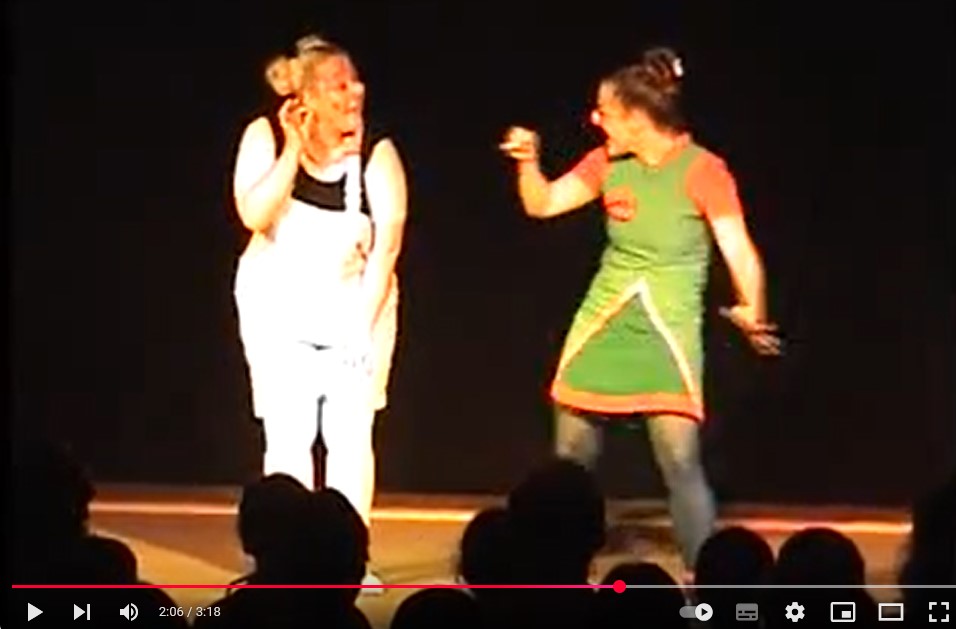Good Clowns-Bad Clowns
by Michael Stuhlmiller

I remember well how a few years ago I gave a whole series of interviews about a sudden appearance that frightened and upset everyone.
Horror clowns had appeared out of nowhere everywhere. Strange figures, wearing disgustingly distorted clown masks, hid in underground garages and around corners to scare unsuspecting and innocent citizens.
It started in America in 2016 and then spread via France to Germany.
A kind of horror virus of terror that suddenly spread everywhere for no apparent reason.
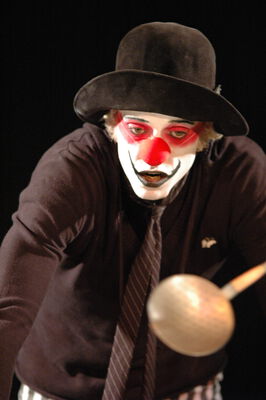
No one had thought of coronavirus back then. I even suspected the pathogen was a cleverly designed advertising campaign for the new film adaptation of Stephen King's "It 2," which was being released at the same time.
Perhaps they had been abandoned somewhere like Kaspar Hauser and were now emerging from their holes? Whatever the trigger, there were daily reports of evil clowns appearing in shopping malls and even hospitals.
The excitement among the "good clowns" was correspondingly great. After all, there were fears that the good reputation clowns had built up over the years in hospitals and retirement homes would be damaged.
The press reacted quickly. In my interviews, I assured journalists that the traditional figure of the clown could endure this without suffering any serious damage. At some point, they disappeared again, just as quickly as they had appeared.
What remained of this horror was the question of why the clown is repeatedly perceived as the antagonist of evil, or even as evil, abusive, or a diffuse figure.
I think there's hardly any profession (although the term "profession" is already suspect to many people) in which such diverse classifications, categorizations, and interpretations take place as in the profession of clown.
From clumsy loser to wise philosopher: it's all there.
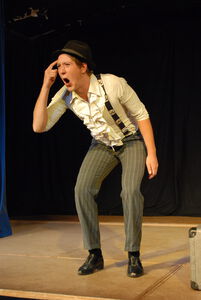
Right now, one of the most powerful men in the world is being called a clown, although this usually doesn't mean anything good.
Initially, people were amused by the fool who had come to crown himself. As it appears on our side of the pond, in America they elected the evil clown as king.
Did they make fools of themselves in doing so? Or is it more likely that we—the good guys, of course—are the ones who fall for the fool, because we run around in panic like Eulenspiegel, trampling each other down, trying to save our shoes, which the fool has snatched from us and tied into a ball high above our heads?
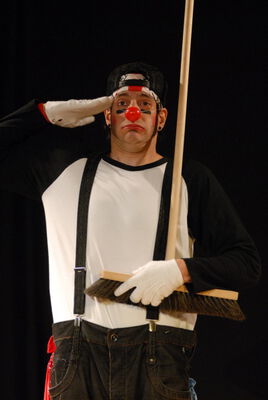
Reason enough to ask ourselves what the Good Clowns and the Bad Clowns are all about?
The image of the good clown these days is strongly influenced by children's performances and by hospital clowns with their dedicated work in hospitals and retirement homes.
Only 15-20 years ago, however, people tended to think of the circus clown duo "White Clown and August."
Here, the red clown August appeared as a clumsy buffoon who always tried to be as wonderful as the white clown. He could also be quite deceitful and even mean at times, and to the delight of the audience, he managed to swindle the noble white clown into a bargain or two. The fact that the white clown always prevailed in the end ensured that good order was not endangered even in the circus.
Everything was in its place, and August's cheeky antics could always be forgiven.
A perfect world in which evil was tolerated as child's play.
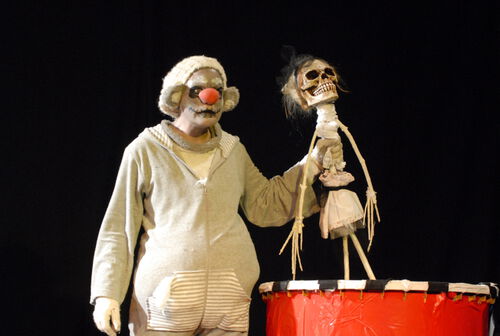
In parallel to the classic circus clowns, there were also quite different representatives of the clown guild in the 1970s and 1980s:
Anarcho-clowns like Jango Edwards and the self-proclaimed terror clown Leo Bassi weren't at all suited to the contemplative family program of circus clowns.
However, if you take a closer look at the history of the clown, which stretches back to the beginnings of humanity and its earliest forms of coexistence, some rather crude characters repeatedly appeared.
The hunchbacked relatives of the red clown, as we know them from the circus, reveal entirely different facets that we are not usually familiar with.
The black clowns and the buffoons do not originate from the poetic-magical world of the circus.
Rather, they are mythical figures: born in the fields, rejected bastards, mooncalves, and deformities. And so their acting and demeanor do not resemble the naive child, the playful dreamer, the clumsy but well-intentioned August.
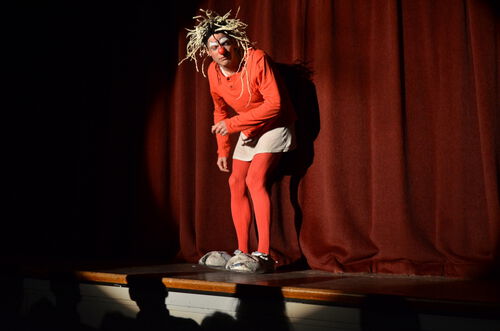
The Black Clown shocks as a buffoon; he insults, teases, and even spits at the audience.
Even in ancient times, the clown's ancestors appeared as comically rustic characters with dubious, foul-mouthed behavior.
And the stumbling gait of Harlequin, a well-known figure from the 16th-century Commedia del Arte, with his typical little jumps, is not only funny.
It is primarily an attempt to conceal a clubfoot, a reference to his kinship with the half-human, half-animal Pan and his horse's hoof.
Throughout the clown's creation, cross-references to not necessarily funny, but rather quite bizarre and even tragic sources of comedy appear.
The history of the clown costume is similar.
The many colorful spots refer to the colors of lepers, which were used in the Middle Ages to mark lepers against contact and infection. The same applies to the bells on the jester's cap and the jester's scepter.
The clown deliberately adopted props of horror. By taking them out of context and exaggerating them in a clownish manner, the horror tips into the ridiculous. Laughter helps bear the disaster, and the clown doesn't shy away from it.
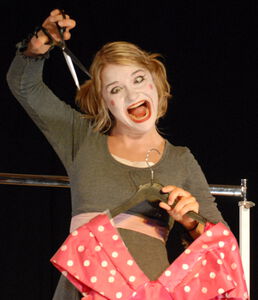
The comic and the horrific lie closely together.
In our day, not quite as tragic but still symbolic, the clown's pants, jackets, and shoes, which are always too short, too long, too big, or too small, are references to the circumstances from which he comes. The clown comes from a background where he never had his own clothes, depending on where you place him.
This was either because, as the smaller and younger, he had to wear the clothes of the grown-ups, or because, as a tramp and homeless clown with his torn pants, he wears whatever he finds, what others give him, or what he "picks up" from a clothesline.
The deformity in the clown reflects the deformity in society.
All of this also makes the clown an advocate for the weak and defenseless, and thus, of course, also for children, who are thrust into an adult world that mostly fails to recognize their delicate, magical origins, rarely appreciates them, and even more rarely fosters them.
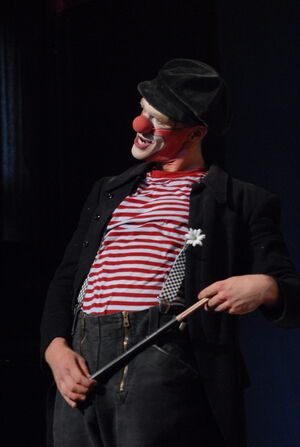
How does the clown deal with this? We recognize: Being a clown takes place on a special level.
Humor functions as a ladder on which the clown can sit safely, look down from above, and observe the interplay between good and evil. Depending on his mood, he playfully hops from one side to the other. This allows the clown to switch worlds without a trace, thus overcoming the collective and conditioned division between good and evil.
Therefore, a division into good and evil is completely un-clownish. Moreover, a division into good and bad clowns completely distracts from his inner aspirations.
Strictly speaking, the fool constantly changes his position—he is an "Gegenteiler".
He immediately questions what everyone is rigidly and firmly holding on to at the moment, only to question the opposite the next moment.
It follows: It is just as fatal to trust a fool as it is to distrust him. And that is not what the fool intends. What the fool wants is for us to trust ourselves, to think for ourselves, to examine and differentiate for ourselves.
The fool shakes our minds.
In the interplay of opposing forces, evaluations also change. What is good for one person is evil for another. This dissolves the supposedly objective classification of good and evil.
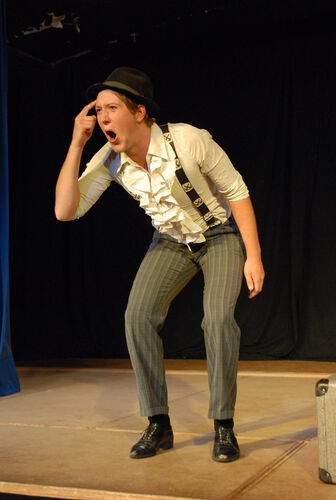
If one recapitulates the history of humanity, especially the history of Western cultures, and realizes how much evil has been created in the name of missionary good, then it can be a horrifying experience. At the very least, one might begin to doubt the classification of "good and evil."
Everything, including evil, always happened for a "good reason" and was thus justified.
How should one classify what Nobel Peace Prize winner Obama said: "Sometimes war is necessary"? Therefore, it seems to me that what is crucial is not how things are evaluated and labeled, but what they achieve. Thus, it is no longer the logo that matters, but what one does and what one achieves as a result. Or as Forest Gump says: "Stupid is only one who does stupid things."
Does the old division into "good and evil" perhaps ultimately only prevent us from taking a closer look? From looking deeper into the "rabbit hole" like Alice in Wonderland? And is this presumably ultimately due to fear? Because if you take a closer look at the rabbit hole, you realize that it is very complex. You quickly get lost and fear you won't find the way out...
This is precisely where the clown comes in.
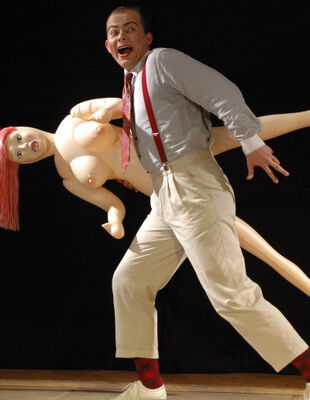
Because sometimes a bit of chaos is needed to achieve clarity.
It has always been the privilege of the fool to say things that no one else would have dared to.
Like a kind of antidote, satire, the grotesque, and clownish exaggeration illuminate what has long since become normal in reality. Their wit is evident precisely where clinging to "the good old order" by all means is the real cause of disaster.
One should therefore never feel too secure and not become too comfortable with the awareness of being on the "good side," otherwise the comfortable "living room" will, not for the first time, become a "chamber of horrors."
Like a seal, "good and evil," "right and wrong" weigh on the truth and distract from the fact that knowledge awaits us beyond these two polarities.
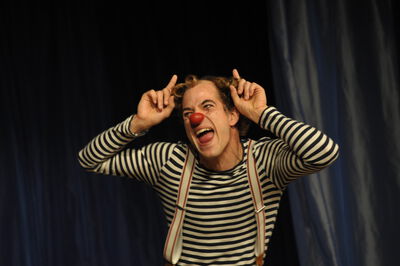
But since truth also has many layers and initially offers only relative certainty, the world remains a mystery.
Well, it's not the clown's job to order the world, but to disrupt it in order to loosen entrenched positions.
In the end, laughter, which sometimes turns into tears, helps us.
The two together warm our hearts and clear not only our lungs but also our heads, and above all: it unites us.
And that's exactly what matters when the world has once again divided itself into good and evil and become entrenched in right and wrong:
So let's not forget to cry together, to laugh, and to connect with one another.
**************************************************************************************************************************************************************************************
Quellen: Alle Fotos sind während Aufführungen in der Schule für Clowns aufgenommen worden. Die Namen der abgebildeten Künstlern lauten der Reihen nach
- Bild 1 Friederike Becker und Tim Schmersow
- Bild 2 Till Toth
- Bild 3/10 Patrick Passehr
- Bild 4 Roy Martin
- Bild 5 Friederike Becker
- Bild 6 / 11 Nikolas Stocker
- Bild 7 Dominique Dell'Oro
- Bild 8 Tim Schmersow
- Bild 9 Helge Nommensen
Wir haben unsere Schüler immer darin unterstützt ihrem eigen künstlerischen Ausdruck zu folgen. Einige der Aufführungen haben für regelrechte kleine Tumulte gesorgt, bis hin zu Kommentaren wie "Ich kommen nie mehr in die Clownschule!"
Eine davon war die von Patrick Passehr. (bei YouTube muss man sich ernsthaft dafür anmelden - wegen verstörender Inhalte - ein Beispiel unser aktuellen Doppelmoral) oder die Szene "Jagdfieber" von Karina Glogau und Luise Gerlach (die man heute auch so nicht mehr aufführen könnte)
Anschauen lohnt sich!
Hier findest Du noch einige der Interviews von 2016 zum Thema: Horrorclowns
https://www.gmx.at/magazine/panorama/horror-clowns-usa-verbirgt-masken-31956440
https://www.gmx.at/magazine/panorama/horror-clowns-usa-verbirgt-masken-31956440
https://www.fr.de/politik/cdu-org26591/ausbilder-horror-clowns-sind-psychopathen-11070461.html
https://www.sat1.de/serien/nachrichten/news/horror-clowns-missbrauchen-positives-image-24623
*********************************************************************************************************************************************************************************
Wenn du auch in Zukunft keinen Blog verpassen möchtest, dann trage dich bitte ein auf unserer Newsletter- Liste


